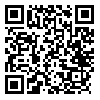Volume 6, Issue 11 (9-2018)
نظریه و عمل 2018, 6(11): 141-174 |
Back to browse issues page
Download citation:
BibTeX | RIS | EndNote | Medlars | ProCite | Reference Manager | RefWorks
Send citation to:



BibTeX | RIS | EndNote | Medlars | ProCite | Reference Manager | RefWorks
Send citation to:
h F, sadeghi A, maleki H, ghaderi M. (2018). Multicultural education in Farsi textbooks (Reading) Iran Elementary Education. نظریه و عمل. 6(11), 141-174.
URL: http://cstp.khu.ac.ir/article-1-2874-en.html
URL: http://cstp.khu.ac.ir/article-1-2874-en.html
Abstract: (9656 Views)
| The purpose of this study was to examine multicultural education in the content of Farsi textbooks of elementary education in Iran.This research was conducted within a qualitative framework and the qualitative content analysis method was used with a conventional (inductive) approach. The sampling method was purposeful and the sample included Farsi textbooks of all the grades of elementary education. The unit of analysis (record) was the theme, pictures and units of the textbooks. To determine the reliability of the qualitative content analysis method with the inductive approach, the review was conducted in two stages, one after completion of 10-50% of the categorizations and the other at the end of the research. Five categories were extracted as the result: introducing and paying attention to mother tongue of ethnoses; introducing celebrities; reflection of dressing style of ethnoses; cultural traditions of ethnoses and introducing cultural heritage. The analysis of the quality of the books showed that only the trace of dominant culture in the textbooks was observed. The findings show that the educational system seemingly seeks to implement a pattern of cultural assimilation that leads to the suppression of the languages and cultures of the Iranian minorities. This approach could bring about negative and reverse effects, and increase the awareness of the people of their identity and history and culture. |
Type of Study: Research |
Received: 2017/12/28 | Revised: 2018/11/28 | Accepted: 2018/04/9 | Published: 2018/11/17
Received: 2017/12/28 | Revised: 2018/11/28 | Accepted: 2018/04/9 | Published: 2018/11/17
| Rights and permissions | |
 |
This work is licensed under a Creative Commons Attribution-NonCommercial 4.0 International License. |





